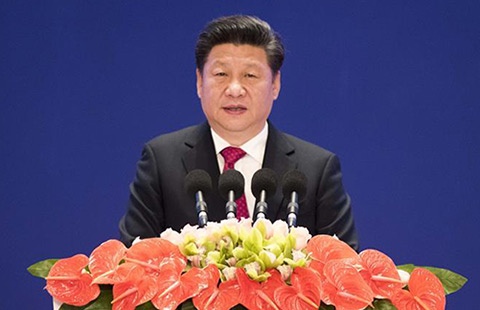Real estate prices continue to pick up
By Zheng Yangpeng (China Daily) Updated: 2016-01-19 11:06New home prices in China continued their upward momentum in December, although the recovery remains uneven across the country, even within first-tier cities.
Month-on-month increases were recorded in 39 of the 70 cities measured, up from 33 in November, the National Bureau of Statistics said on Monday.
On a year-on-year basis, prices in the 70 cities rose an average of 7.7 percent in December from a year earlier, quickening from November's 6.5 percent rise, the bureau said. However, 49 cities saw a decline in prices compared with a year ago.
Losses in most cities were offset by strong gains in the largest cities. Among first-tier cities, Shenzhen saw the biggest gain with a 3.2 percent increase over November and a 47.5 percent surge over a year earlier. Shanghai rose 2.1 percent, up 18.2 percent from a year ago.
But Beijing at 0.5 percent and Guangzhou at 0.7 percent were more modest increases.
Fueled by stimulus measures such as lower down-payment requirements, new home prices have been rising since May. Five interest rate cuts last year helped to bring mortgage rates to their lowest in five years.
The divergence was also reflected in sales. Of the 50 cities monitored by the China Real Estate Index System, sales in first-tier cities surged 34.2 percent (as measured by floor space) in December over November, but in second-tier cities sales rose just 7.9 percent. Those in third-tier cities rose 10.6 percent.
"Shenzhen's price hike starting in November was largely driven by speculators who borrowed money to buy homes. The 47.5 percent year-on-year growth is really rare in the past 20 years," said Yang Hongxu, deputy head of the E-house China R & D Institute.
The continued drawing down of the housing inventory, along with the central government's pledge to further cut the housing glut next year, has pushed expectations of further rises in prices and sales in 2016.
E-house China's data showed residential inventory in first-tier cities fell by 12.9 percent for the past year, while it fell 3.2 percent and 2.5 percent in second and third-tier cities, respectively.
Home stockpiles have fallen most in Suzhou, Changzhou(both in Jiangsu), Fuzhou(Fujian),and Shanghai, while stockpile gained most in Maoming(Guangdong), Taiyuan(Shanxi) and Jining(Shandong).
"Prices are likely to rise where inventory fell. In those cities where inventory increase, prices are difficult to rise," said the E-house report.
The institution predicted a 7 percent increase in price nationwide this year, and a 5 percent growth in sales.
Other agencies, such as Moody's Investors Service, are less sanguine, expecting a 0 to 5 percent growth in the value of property sales nationwide.
- Auto financial platform dreams big on one-stop services
- China imports 18 million kg Zimbabwean tobacco
- Chinese automakers to gain larger market share globally: KPMG survey
- Wanda banks future on Internet finance
- Foreign lenders required to hold reserves in RMB
- Private refineries gain 20% more profits despite oil slump
- China's economic growth down but within 'reasonable' range
- Asia Clean Capital receives $40m finance facility from Goldman Sachs
















